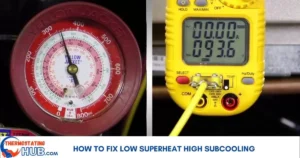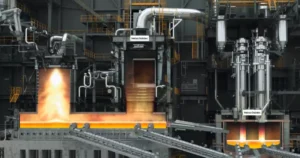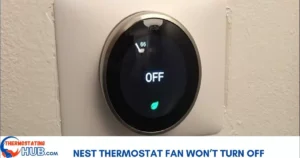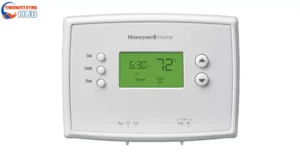If your Nest thermostat is emitting a buzzing sound, it is likely due to dirty switch contacts or wires within the thermostat. To address this issue, you can resolve it by removing the thermostat display from the wall or taking any necessary steps to access the wires. Clean both the wires and the contacts on the back of the thermostat to rectify the problem.
Nevertheless, it is important to acknowledge that there might be additional factors contributing to the buzzing in your nest. Let’s explore these issues and discuss potential solutions in the table provided below.
Possible Reasons Your Nest Thermostat Is Buzzing And How To Fix It
Ever wondered why your Nest thermostat is making that buzzing sound? Don’t worry, it happens! There could be a few reasons behind it like a loose wire or maybe some dirt got in there. But hey, no need to panic! Let’s figure it out together. Check out the simple fixes below to make that buzzing a thing of the past.
Here’s a simple table outlining possible reasons for your Nest thermostat buzzing and how to fix each issue:
| Issue | Possible Cause | How to Fix It |
| 1. Loose Wires | Wires may be improperly connected or loose. | Ensure all wires are securely connected to the thermostat. |
| 2. Dirt or Debris | Accumulation of dirt or debris in the unit. | Gently clean the thermostat to remove any dirt or debris. |
| 3. Software Glitch | Software issues causing buzzing sounds. | Restart the thermostat or perform a software update. |
| 4. Electrical Interference | External factors causing interference. | Move electronic devices away or reduce interference sources. |
| 5. HVAC System Issue | Problems with the heating or cooling system. | Check the HVAC system and consult a professional if needed. |
| Low Battery |
Loose Wires
Unstable wiring in a Nest thermostat may lead to buzzing or anomalous behavior. Here’s an explanation of the potential causes:
Electrical Signal Interference: Loose wires can generate electrical noise, disrupting the stability of the signal reaching the thermostat components. This interference may result in erratic operation, accompanied by buzzing sounds.
Voltage Fluctuations: When wires are not securely connected, voltage fluctuations can occur, impacting the thermostat’s performance. These fluctuations may lead to instability and the generation of buzzing sounds as electrical signals become inconsistent.
To resolve this issue, follow these steps:
1. Power Off: Prior to working on your Nest thermostat, deactivate the HVAC system power at the circuit breaker.
2. Wire Check: Examine all thermostat-connected wires to ensure secure connections. Tighten any loose connections.
3. Wire Inspection: Inspect the wires for damage or fraying and replace any compromised ones.
4. Power On: Once all wires are securely in place and damaged ones replaced, restore power to the HVAC system.
5. Operational Check: Test the thermostat to ensure proper functioning without buzzing or unusual behavior.
If uncomfortable dealing with electrical components or uncertain about addressing loose wires, it is advisable to seek assistance from a professional HVAC technician who can effectively diagnose and resolve the issue.
Always remember to deactivate the HVAC system power before working on the thermostat to prevent electrical shock or system damage.
1. Issue Identification: Loose wires in a Nest thermostat can lead to problems.
2. Possible Effects: This may cause buzzing sounds and erratic behavior.
3. Reasons for Issues:
- Electrical Signal Interference: Loose wires create interference, affecting signal stability.
- Voltage Fluctuations: Unsecured wires can cause voltage fluctuations, impacting thermostat performance.
4. Steps to Resolve:
- Power Off: Turn off HVAC power at the circuit breaker.
- Check Wires: Ensure all wires are securely connected; tighten any loose ones.
- Inspect for Damage: Examine wires for damage and replace if necessary.
- Power On: Restore power once all wires are secure.
- Test Operation: Check the thermostat to ensure normal operation without buzzing.
5. Professional Help: If uncomfortable, seek assistance from an HVAC technician.
6. Safety Reminder: Always turn off power before working on the thermostat to avoid shocks or system damage.
Read also: Aprilaire Thermostat Says Off
Dirty Wires Switching Contacts

The most frequent cause of a buzzing thermostat is dirty wires on the switching contacts, leading to electricity arcing between the wire and its connection point, resulting in the buzzing sound.
Dirt can enter your thermostat through various means, such as during home renovations where dry dust may find its way into the device.
To address this issue, use a fire cloth to clean and remove dirt and debris from around the wire contacts and terminals.
Software Glitch
A software glitch is like a small hiccup in a computer program. It’s a little error or unexpected issue that can cause things to go wrong. Imagine you’re typing a document, and suddenly the letters start appearing in the wrong order that could be a software glitch. It’s a temporary problem that usually gets fixed when the software is updated or restarted.
So, when your computer or phone acts a bit weird, it might just be a software glitch trying to get your attention.
Electrical Interference
Electrical interference happens when unwanted signals disrupt the normal flow of electricity. These disruptions can come from various sources, like electronic devices or power lines. Imagine your favorite radio station suddenly getting fuzzy or your Wi-Fi signal dropping unexpectedly that could be electrical interference at play.
To reduce interference, we use shielding and filters in electronic equipment. It’s like putting up a barrier to keep the unwanted signals out, helping our gadgets work smoothly.
HVAC System Issue

If your HVAC system is making a buzzing noise, it could be due to dirty wires on the switching contacts. Dirt can enter the thermostat during activities like home renovations, causing electricity to arc and create a buzzing sound. To fix this issue, use a fire cloth to clean the dirt and debris around the wire contacts and terminals.
Low Battery
Insufficient battery levels in a Nest thermostat may lead to abnormal behavior, such as buzzing. Several potential reasons for this occurrence include:
1. Power Supply Variability: Nest thermostats typically function on battery power or a combination of batteries and external power. When the battery charge is low, there may be a decline in voltage, impacting the thermostat’s operational capabilities.
2. Voltage Fluctuations: Low battery voltage can cause fluctuations in the electrical signals reaching the thermostat’s components. This instability may result in erratic functioning and the production of buzzing sounds, stemming from inconsistent or irregular electrical signals.
3. Electrical Interference: Low battery voltage might generate electrical noise or interference, manifesting as a buzzing or humming sound emitted by the thermostat. This noise may be more noticeable in quiet areas, such as bedrooms.
To resolve this issue, consider the following steps:
Replace Batteries: If your Nest thermostat relies on batteries, replace them with fresh ones, ensuring they match the specified battery type outlined in the thermostat’s manual.
Inspect External Power Connection: For thermostats with an external power source like a C-wire connection, confirm that it is securely attached. A stable external power supply can mitigate voltage-related problems.
Perform a Thermostat Reset: Following battery replacement or verification of the external power connection, attempt to reset the thermostat. Refer to the user manual for precise instructions on resetting your specific Nest thermostat model.
Dealing with a “Low Battery” issue in your Nest thermostat? Here’s a quick guide to troubleshoot:
- Check Power Source: Nest thermostats run on batteries or a mix of batteries and external power. Low battery levels can cause voltage drops, affecting the thermostat’s operation.
- Watch for Fluctuations: Low battery voltage leads to electrical signal fluctuations, causing unstable operation and potential buzzing sounds.
- Listen for Noise: Low battery levels may result in electrical noise or interference, audible as buzzing or humming, especially in quiet areas.
To Fix:
- Replace Batteries: Swap out old batteries with the correct type, as specified in the thermostat’s manual.
- Inspect Power Connection: If using external power like a C-wire, ensure a secure connection to stabilize the power supply.
- Reset Thermostat: After battery replacement or power check, refer to the user manual for specific steps on resetting your Nest thermostat.
Read also: What Are 410a Pressures on a 95-degree Day?
Pros and Cons of Nest Thermostat Buzzing:
Pros:
- Early Warning: Buzzing may alert you to a low battery, prompting timely action to avoid disruptions.
- Diagnostic Signal: Acts as a built-in diagnostic, signaling potential issues that need attention.
- Energy Efficiency: Identifying and addressing buzzing can contribute to the overall energy efficiency of your thermostat.
Cons:
- Noise Disruption: The buzzing sound can be bothersome, especially in quiet spaces like bedrooms.
- Possible Malfunction: Buzzing may indicate a malfunction or instability in the thermostat’s operation.
- Attention Required: Resolving buzzing issues demands your attention and troubleshooting effort.
Features Of Nest Thermostat Buzzing
If your Nest thermostat is making a buzzing sound, it’s likely due to a few features. One reason could be the power supply. Nest thermostats use batteries or a combination of batteries and external power, and when the battery is low, it can affect how it works. Another thing to consider is voltage fluctuations. Low battery levels can cause changes in the electrical signals reaching the thermostat, leading to buzzing. Sometimes, the buzzing might be caused by electrical noise due to low battery voltage. This noise is more noticeable in quiet areas like bedrooms.
To fix it, you can replace the batteries with fresh ones, making sure they’re the right type. If your thermostat has external power, like a C-wire, check that it’s securely connected. You can also try resetting the thermostat according to the instructions in the user manual to address the buzzing issue.
Answers To Key Questions
Why is my Nest thermostat making a buzzing noise?
Your Nest thermostat may produce a buzzing noise due to low battery levels. When the battery charge is insufficient, it can lead to voltage fluctuations and electrical noise, resulting in a buzzing sound. To resolve this, consider replacing the batteries with the correct type specified in the thermostat’s manual.
What is a common problem with Nest thermostats?
A common issue with Nest thermostats is power-related problems. These can include low battery levels, which may cause various issues like buzzing sounds or erratic behavior. Checking and ensuring a stable power supply, either from batteries or an external source like a C-wire, can help address these common problems.
How do I fix the H71 error?
The H71 error on your Nest thermostat typically indicates a connectivity issue. To resolve this, check your Wi-Fi connection and ensure the thermostat is within range. Rebooting your router, reconnecting the thermostat to Wi-Fi, or performing a factory reset may help fix the H71 error. Consult your thermostat’s manual for specific instructions tailored to your model.
Why does my Nest keep saying no power?
If your Nest thermostat repeatedly displays a “No Power” message, it suggests a power supply problem. First, check the batteries if your thermostat uses them, and replace them if needed. If your thermostat is externally powered, such as through a C-wire, confirm the connection is secure. Addressing these power-related issues should resolve the “No Power” message on your Nest thermostat.
Conclusion
If you find your Nest Thermostat buzzing, don’t fret! The good news is there are solutions at your fingertips. By checking the power source, watching for fluctuations, and listening for unusual noises, you can troubleshoot the issue easily. Simply replace the batteries, inspect the power connection, and consider a quick thermostat reset. With these straightforward steps, you can silence the buzz and enjoy a smoothly operating Nest Thermostat.

I’m Justin Taylor, your HVAC aficionado at thermostatinghub.com. I’m not just a writer; I’m your problem-solving partner for all things thermostat-related. Join me on my blog for stories that unravel the mysteries of heating and cooling. Let’s turn your HVAC puzzles into tales of comfort and control!














